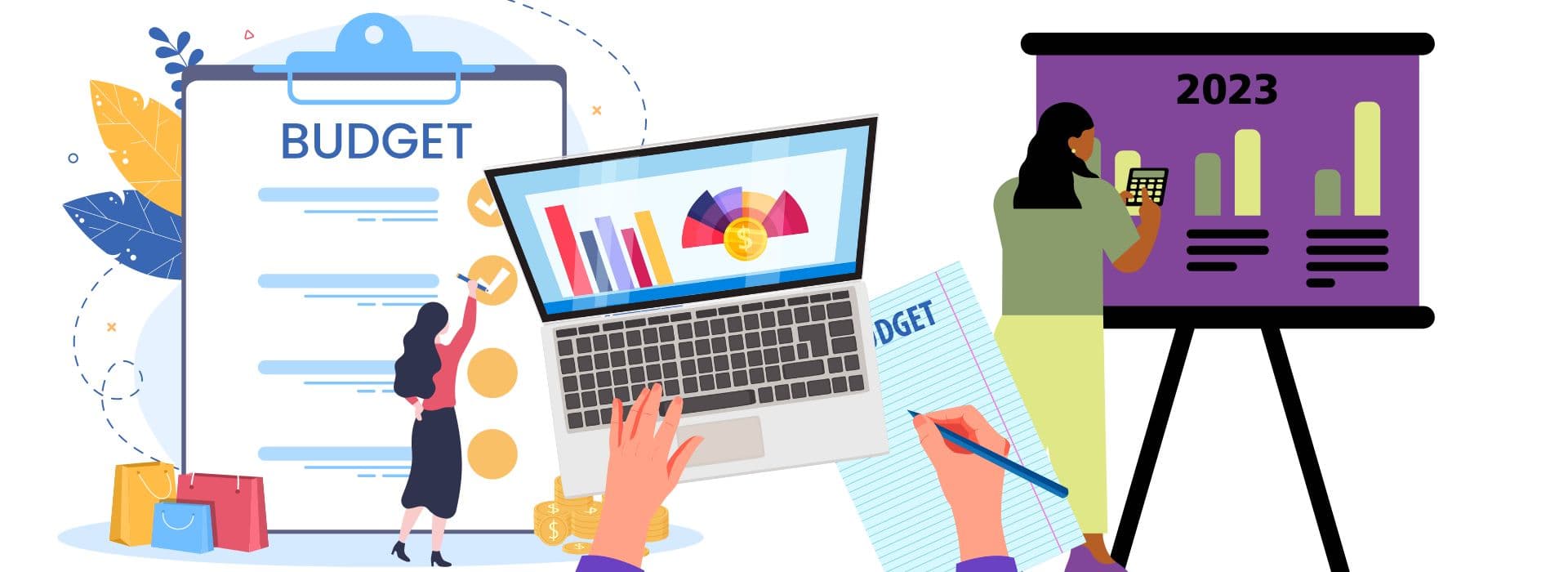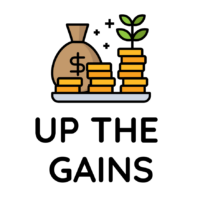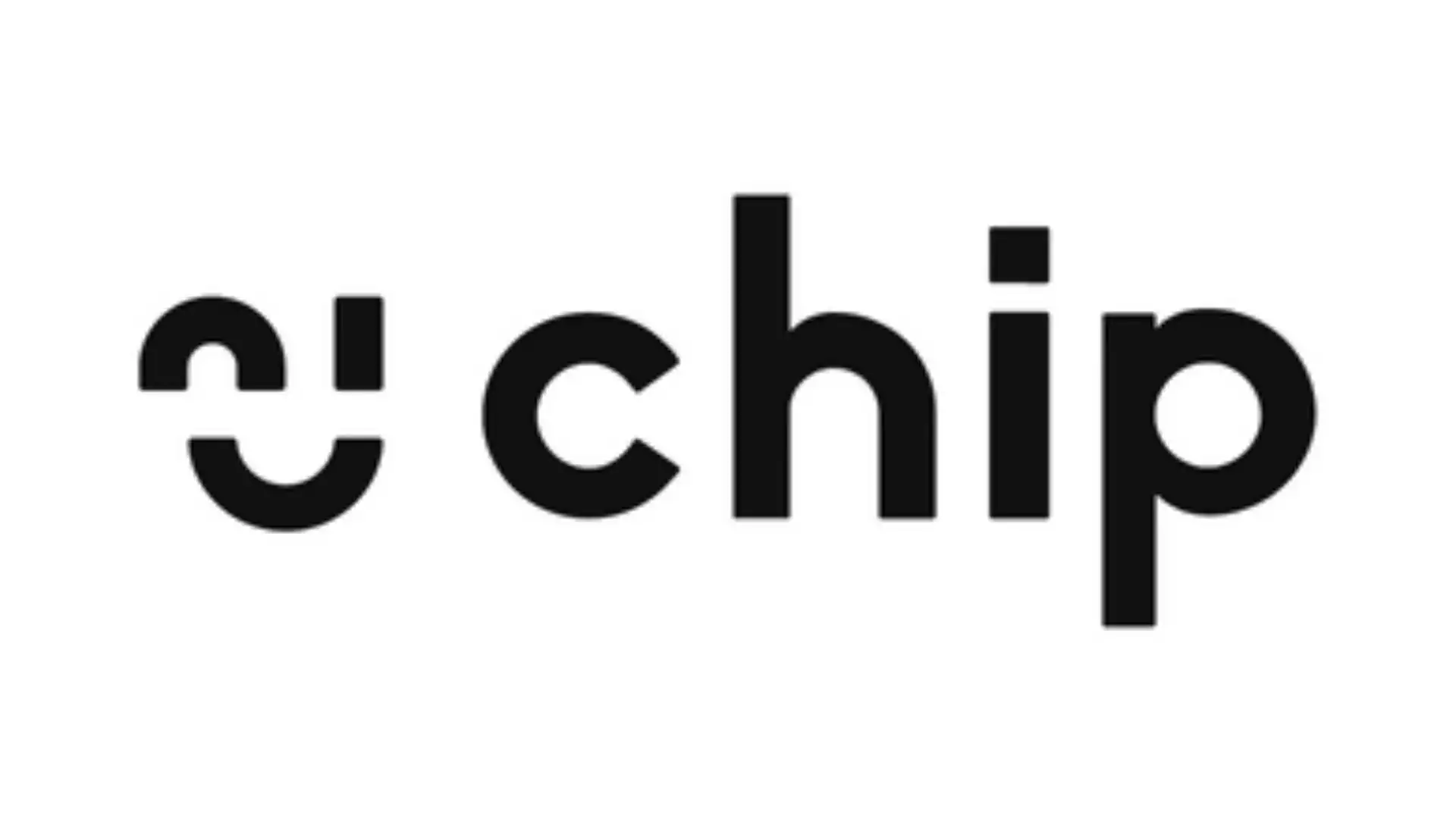Best Budgeting Apps UK 2024
DISCOVER THE BEST BUDGETING APPS IN THE UK RIGHT HERE

Sammie Ellard-King
I’m Sammie, a money expert and business owner passionate about helping you take control of your wallet. My mission with Up the Gains is to create a safe space to help improve your finances, cut your costs and make you feel good while doing it.

For me personally budgeting is a massive part of being responsible with my money.
It helps me identify where I’m spending, and where I can save, and allows me to invest regularly.
You’ll need an app that can help prioritise bills, income and transactions to give you a full picture of where your money is going.
I think Snoop* is the best app out there for budgeting and it’s totally free to use.
It doesn’t have the saving and investing features that Plum* has but you cannot beat it for the 360 degree overview it gives you.
Below I’m looking at the best budgeting apps in more detail to help you find the right app for your needs.
Ready to get saving? Great! Let’s do it.
Best Budgeting Apps UK Overview
Snoop - Best For Budgeting
Key Features
- Extensive budgeting tools
- Personalised saving tips based on spending habits
- Household bill feature to get you better deals
Snoop is a proper budgeting app allowing you to track your spending, bills and savings across multiple banks and credit cards.
It doesn't offer interest, investments or banking products like some other providers on the list but if you just need help budgeting then Snoops tools are 1st class.
- Bill switching suggestions
- Spending categories
- Credit card trackers and suggestions
- Rewards and offers
- Weekly and monthly spending summaries
- Daily alerts
- No interest offered or investing products
What I like about Snoop
Snoop is an award-winning savings app that has taken the UK by storm.
It has both a free and a paid version but its main goal is helping you track your spending, cut down your bills and control your finances.
It does this by connecting all of your banks and credit cards using its AI algorithm to make smart suggestions and look for money saving opportunities.
I had a lot of fun playing around with Snoop and enjoyed their rewards section which actually got me a great deal on a current account switch.
Plum - Best Mobile App
Key Features
- Ready made & DIY ISAs
- Annual plaform fee: £12 (first month free)
- Min Deposit: £1
What an app! I utilise their smart AI to set money aside automatically every payday!
You can earn up to 4.21% AER with their Easy Access Interest Pocket, and begin investing in up to 3000 stocks and funds from as little as £1.
EXCLUSIVE OFFER: Get a free £5 cashback in your Plum account when you open an account through Up the Gains.
- Auto save and invest
- Savings pots with interest
- Low fees in comparison to Chip
- ISAs and free savings accounts available
- Easy to use mobile app
- Tiered fee levels to access all investment options
What I like about Plum
We love Plum. It’s a super slick and easy to use app that’s also in the robo advisor category. Signing up took less than 5 minutes.
It connects all your banks, displaying a real-time view of your income and expenses alongside 21 investment funds and over 3000 individual stocks to choose from.
It can also make recommendations for your investing based on your income and spending habits and can then automatically invest into your chosen funds each month.
They have a free option which is brilliant and paid upgrade available too!
We particulary like the dashboard where you can see your savings pots and investment portfolio results.
Chip - Best For High Interest Rates
Key Features
- 4.84% AER Interest Rates
- Award winning AI allows you to auto-save and invest
- Investment portfolios with help from top fund managers
4.51% Interest Rates On Easy Access Savings Accounts. Automatically build your wealth using smart AI.
Calculates your saving and spending pots based on your budget.
- Award winning mobile app
- Save automatically with AI
- Save loose change with their roundup feature
- Invest in funds and stocks
- Can only link one bank account
- Withdrawals could be quicker
What I like about Chip
Chip connects to your banks and analyses your bills, transactions and income. Their award-winning AI allows you to auto-save and invests, re-evaluating your contributions daily.
You can easily edit your saving levels, and the app adjusts your savings and investments accordingly.
Their investment arm gives you access to some of the world’s largest Asset Managers and their funds.
The free plan is great and they have paid upgrades available if you want to level up.
Moneybox - Best For ISAs
Key Benefits
- Award winning Lifetime ISA
- Round up feature
- Minimum deposit: £1
Moneybox works a little differently. It rounds up your spare change when you spend money.
You can use these round-up funds to invest straight through Moneybox. This is an app to use once you have your budgeting on point.
There is a £1 per month subscription fee, and for me, Moneybox is the perfect option for those looking for a more extensive selection of savings accounts like ISAs and equally investing too.
- Award winning personal finance app
- ISAs and savings accounts available
- Excellent Lifetime ISAs
- More of a tool once you have your budgeting sorted
What I like about Moneybox
Moneybox is one of the most popular ISA providers and investment apps in the UK. The app is fantastic and has so many great features to help savers and investors.
The investing arm of the business gives you access to some of the worlds best ETFs, funds and stocks so you have a suite of products to choose from.
They offer self and expert managed options so they really do cater for all types of investors.
They also offer the ability to round-up purchases to the nearest pound directly into your chosen accounts alongside personal pensions and more!
What Is Budgeting?
Put simply, budgeting is a type of financial plan. It allows you to balance your income and expenses over time. Think of it as a roadmap that shows you how much of your earnings you can spend on your debt, how much you can save, and what’s left over for other expenses.
The first step involves tracking your expenses against how much you earn to understand where you’re spending money, and whether your income covers that.
Based on this, you can identify where you can reduce your spending and start saving money. These savings can help you reach your overall goals, like buying a house or paying off your debt.
I know from my own experience that you have to start somewhere, and step one is determining where your money’s going. I know it’s a scary thought, particularly if you’re in financial trouble, but taking this first step is important.
Budgeting apps make it super simple to create budgets you can stick to. Let’s see how the 50/30/20 rule works to get you started.
50/30/20 Rules
The 50/30/20 budget rule is basically a way to help you categorize your spending and look at making investment and saving plans for your future.
It’s not a firm rule as such – everyone’s circumstances are different. If you’re trying to pay off a significant debt then you’ll need to apply the rule with quite a bit of flexibility to meet your monthly repayment. But, in general, the 50/30/20 rule provides a framework to help you start budgeting.
The 50/30/20 rule has three main categories:
Needs (50%)
Your needs are the absolute essentials that you can’t live without. These include:
- Utilities (water, gas)
- Rent
- Essential clothing
- Transportation
- Healthcare
- Insurance
- Car payments
- Childcare
- Minimum loan repayments
- Groceries
- Mortgage payments
Based on this rule, you should allocate at least 50% of your monthly income to cover these basics.
Wants (30%)
Now, let’s move on to wants. These are things you spend money on that bring joy to your life. This will vary from person to person, but these are some examples:
- Events
- Clothes shopping
- Concert tickets
- A new phone
- Eating out
- Travel
- Gym membership
- Getting takeaways
- New plants
- Home decor
Based on the 50/30/20 rule, you can allocate about 30% of your net income to your wants. But remember, this is just a guide. If you have other things to pay off that are more important, you may need to adjust the percentage.
It’s all down to your personal circumstances in the end. 30% might be too much for “wants” if you’re paying off a student loan, for example.
Nonetheless, it is important to spend money on things that bring you joy; otherwise, you’ll feel like you’re working to merely survive. This can be a downward spiral, so leave some room for fun!
Saving and debt (20%)
Look, nobody likes saving money. It’s quite boring to see 20% of your money just go towards something that you may or may not need.
However, savings are a vital part of budgeting. It can prevent you from getting into serious trouble debt-wise if there’s an emergency.
Savings also give you security in your future like:
- Retirement
- Buying a house
- Weddings
- Medical treatments
They also help when things like a pandemic hit. The recent global pandemic taught us all a thing or two about being prepared for the unexpected – a valuable lesson in my opinion! Life happens, and there is no way to avoid certain things. If you’re not prepared, you can end up with massive debts, which cause problems in the long run.
Unfortunately, as many as 50% of people in the UK with debt suffer from mental health issues. This is why budgeting is so important. I don’t want anyone getting into a situation that could cause harm to their health.
Ultimately, your emergency fund should be able to cover around three months of living expenses. This should give you enough time to get back on your feet if something unforeseen happens, like losing your job (or a zombie apocalypse).
Saving this money takes time. It’s not something that happens overnight, so it’s important to remain committed to saving as much as you can, wherever you can.
You can allocate about 10% of your net income to a savings account and 10% towards paying off any debts. This isn’t the monthly repayments but actually putting money toward the debt to reduce the monthly payments.
My list of top money-saving apps might also come in handy here.
Top Budgeting Tips
Here are some of my top tips for budgeting money:
Track your spending: It’s very difficult to start saving when you have no idea how much you’re spending and where. Budgeting apps take all your bank accounts and credit information to show you where you could save and cut back through your bank accounts.
Set realistic savings goals: SMART Goals (Specific, Measurable, Achievable, Realistic and Timely) are a great way to begin saving. Start with a small goal and adjust it as your circumstances change. For example, start by saving 10% of your monthly salary for emergencies. If you get a raise in six months, increase that to 12%.
Prioritize your spending: It’s very easy to blur the line between wants and needs. You should have a clear guide for each and focus on spending money on the absolute essentials first.
Cash is king: It’s always best to use the money you do have rather than relying on credit. Credit is one of those tricky things – great for emergencies and long-term investments like a home loan. But – and a very important “but” – you should never use credit card accounts to fund your living expenses. You should live within your means.
Cut back where you can: Budgeting apps come in handy here as well. You can see where you’re spending on unnecessary things. You’ll be surprised at how many forgotten subscriptions can end up costing each month. You can save a lot if you cancel wasteful subscriptions.
Review your budget: Things change as time passes, and having the same budget in place for decades won’t work. You should review your budget regularly to ensure you’re accounting for changes in your financial circumstances.
Automate your spending: It’s a good idea to have money for the essentials come off your bank accounts automatically. It’s very easy to forget or slip up one month, which might push some over the edge in the spending department. Automating monthly debits ensures you’re in the clear.
Pay off your debts: I highly recommend paying off debts as quickly as possible. Those interest rates can accumulate at an alarming rate, so try your best to cut down on spending to get the debts paid off ASAP.
Try the 1p challenge: It’s super simple: you put away 1p on day one, 2p on day two, and so on. After a year, you could have £650 to spend or to put toward your emergency fund. It’s like your personal savings account.
Don’t get overwhelmed: Facing your debt is important. You can’t run away from it, so it’s time to face the music. You have to start somewhere, so use a budgeting app to help you find the best ways to save and where you can reduce your monthly expenditure to get the debt paid off.
Here are some other great saving tips for a simple household budget.
How to make sure I don't go over budget?
Keeping your budget in check requires careful planning and discipline. Here are some strategies to prevent overshooting your budget:
Adopt SMART Goals: Setting Specific, Measurable, Achievable, Realistic, and Timely (SMART) goals can guide your financial planning. Aim for gradual and feasible saving targets, like starting with a 10% saving rate and incrementally increasing it each month.
Create Separate Savings Accounts for Budget Categories: Establish dedicated accounts for different budgetary needs – essentials, discretionary spending, and savings. Utilise banking apps like Monzo or Starling that offer ‘virtual savings pots’, simplifying the tracking of your expenses across different categories.
Initiate Standing Orders for Paydays: On receiving your salary, promptly distribute it across the different savings accounts according to your budget. If you have an investment account, automate transfers to it as well.
Automate Budgeting Process: To make budgeting less burdensome, use smart budgeting apps that connect to your bank accounts, reducing manual record-keeping. Just ensure the app is regulated by the FCA before granting access to your bank account.
Prioritise Paying Off High-Interest Debts: It’s easier to stick to your budget without the burden of hefty debts. Strive to clear these quickly to make room for a more realistic financial plan.
Establish an Emergency Fund: Set aside funds for unexpected expenses like sudden medical bills or job loss. Aim for an emergency fund that can cover 3-6 months of living costs.
Monitor Your Progress: Use money management apps to track your spending and ensure adherence to your budget. Regular monitoring can offer insights and aid in maintaining control over your finances.
Frequently Asked Questions
Most frequent questions and answers when it comes to the best budgeting apps UK
Are budgeting apps safe?
Absolutely! Most budgeting apps use the same encryption technology as some of the best banks in the world. While the apps do access personal information, they have no way of getting into your bank accounts to retrieve the money. All my recommended apps are also regulated by the FCA, so you can rest assured your money is safe.
Why isn’t my budget working?
If you’ve got a budget planned but can’t seem to get it up and running, you’ve likely set unrealistic goals for your spending habits. If your essentials require more money than what you’ve put aside, there’s simply no way to get around it. So, when making goals, be sure to have enough money in each category to avoid under-budgeting.
I’m interested in investing, can a budgeting app help?
Yes. Certain budgeting apps like Chip, Plum, and Moneybox offer investment opportunities that align specifically with your personal needs. They make recommendations based on your spending habits on all your accounts, ensuring you make the best financial decisions.
Do budgeting apps access all my financial accounts?
Most budgeting apps need access to all your financial accounts to make the best recommendations for your savings goals. But they can’t access the funds in your financial accounts, so don’t worry. The apps are there to help, so don’t try to hide funds – you need to account for everything.
How do I choose the right budgeting app for my needs?
You need to set a goal. Do you need help paying off all your accounts, monitoring your spending habits, or are you looking for help with investment? A Budgeting app is great, but you need to find one that will help you achieve your end goal.
Why do budgets fail?
Budgets can fail for various reasons:
- Unrealistic Goals: Setting overly ambitious targets that are hard to meet.
- Lack of Flexibility: Not adjusting the budget to account for changes in income or expenses.
- No Emergency Fund: Not having a safety net for unexpected expenses.
- Impulse Spending: Succumbing to unanticipated purchases that disrupt budget balance.
- Neglecting Small Expenses: Ignoring minor costs that accumulate over time.
- Not Tracking Expenses: Failing to monitor and review spending regularly.
- Failing to Prioritise: Not focusing on paying off high-interest debt or saving for important goals.
How should a beginner start saving money?
A beginner can start saving money by following these steps:
Establish Clear Goals: Define what you’re saving for, whether it’s a long-term (a house, retirement) or short-term goal (saving for a holiday, new gadget).
Create a Budget: Outline your income and expenses to identify how much you can realistically save each month.
Start Small: Even a small amount saved regularly can add up over time.
Automate Savings: Set up automatic transfers to your savings account right after you get paid.
Cut Unnecessary Expenses: Identify and eliminate non-essential spending.
Build an Emergency Fund: Aim to save enough to cover 3-6 months of living expenses.
Pay off Debts: High-interest debts can eat away at your potential savings, try to pay these off as quickly as possible.
Use Saving Tools: Utilise budgeting apps or financial tracking tools to monitor your progress.
Educate Yourself: Learn about different saving and investment strategies to maximise your money.
Wrap Up
Finding the best budgeting apps for 2023 is easy with so many to choose from; each offering amazing advice and investment opportunities.
However, finding the right one for you might take a bit of time. You need to choose a budgeting app that has the features you need for your financial circumstances.
It won’t work if you go with a budgeting app that only provides budgeting functionality when you want a budgeting app to help get your savings accounts on track for investing in a home.
So, before you get started, you must understand what your goals are and look for a budgeting app that will help you get there.
Looking for more advice? Learn how to save money and not spend it.









